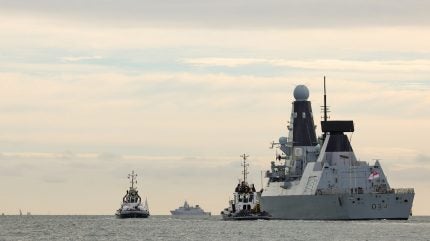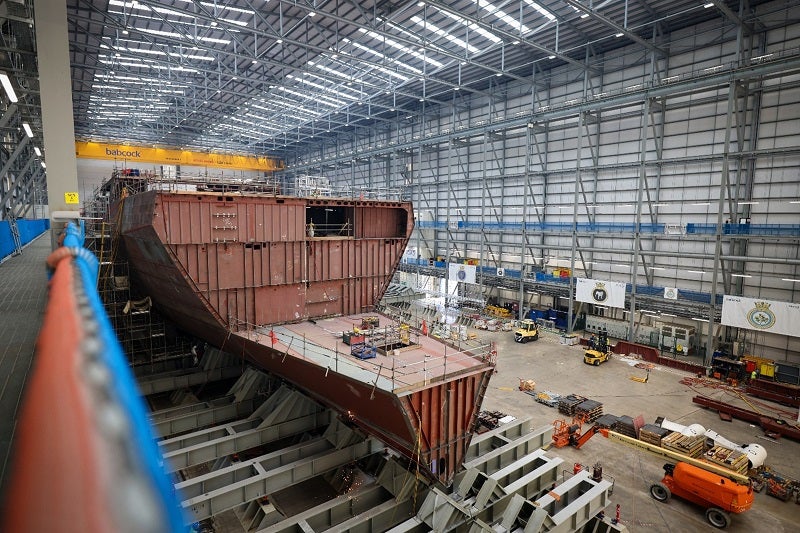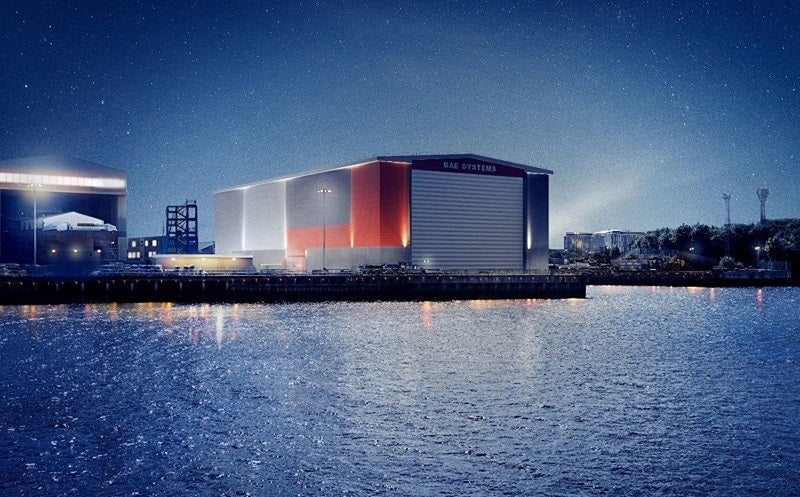
The Royal Navy’s next-generation Type 83 destroyer will keep British shipyards at work until at least the mid-2040s.
Maria Eagle, the UK Minister for Defence Procurement, reiterated the timeline in a parliamentary response on 11 February 2025.
Type 83 will form the centrepiece of the maritime component of the UK’s Future Air Dominance System (FADS). This Integrated Air and Missile Defence network is currently in a pre-conceptual stage; the Ministry of Defence is in the process of defining elements of the system with industry.
At present, the Type 83 design is similarly undefined. However, the service anticipates the future destroyers will operate alongside numerous disaggregated sensors and effectors including frigates, naval aircraft, weapons, and uncrewed autonomous systems. These warships are scheduled to replace the Royal Navy’s six existing Type 45 destroyers beginning in the late 2030s.
In the meantime, British industry will insert a new range of capabilities onto the future surface combatants: with a focus on ballistic and hypersonic missile defence and laser directed-energy weapons such as DragonFire – for which trials are due to take place from as early as 2027.
Notably, Eagle added that “it is not yet possible to confirm where these ships will be built.”
Although, it would be reasonable to expect the competition will likely pit Babcock and BAE Systems against eachother, as two of the nation’s foremost naval primes.
Rosyth shipyard: Type 31
Babcock International operate a shipyard in Rosyth, Scotland, on the coast of the Firth of Forth.
There, the shipbuilder can accommodate three ships or submarines in three dry docks up to 320 metres in length, with secure non-tidal access and ship lift facilities up to 1,000 tonnes.
Previously, Port Babcock Rosyth – as the site is known – supported the building and assembly of the Royal Navy’s largest ever vessels: two Queen Elizabeth-class aircraft carriers, which have a displace 65,000 tonnes respectively. More recently, five multi-purpose Type 31 frigates are being built at the facility.

Rosyth expanded its infrastructure with an investment of £100m for this work in last decade. Since then, a £55m additional investment in advanced systems technologies at Rosyth is currently underway.
Around a 1,250 strong workforce has been leveraged throughout the UK at programme peaks, plus an additional 1,250 people within the wider maritime supply chain.
The build of the first three ships in the Type 31 Inspiration-class frigate programme are making steady progress, the company said in a statement on 6 February.
“We expect the float-off of the first ship, HMS Venturer, to be in the first half of [fiscal year 2026] and float-off of the second ship, HMS Active, in the second half of FY26.”
Type 31 is based on the Arrowhead (AH) 140 design, which Babcock and its partners BMT and Thales proposed for the £2bn ($2.57bn) Type 31 programme in September 2019. AH140 is becoming a popular exportable surface ship concept: Poland adopted the model for its Miecznik frigates while Indonesia gained a licence for the frigate design in 2021.
Govan shipyard: Type 26
Nearly 44 miles west, on the banks of the River Clyde, BAE Systems builds naval platforms at its shipyard in Govan and Scotstoun in Glasgow.
The site houses the construction of numerous shipbuilding programmes for the Royal Navy. Besides the nuclear-powered ballistic-missile Dreadnought-class submarines and AUKUS nuclear-powered fast-attack boats, the facility will also support the £4.2bn programme to build eight Type 26 City-class frigates.
Construction on the first four City-class warships are already underway while the construction of the fifth vessel began in November 2024.
The first Type 26, HMS Glasgow, is progressing through the key stages of outfit, test and commissioning; the second ship, HMS Cardiff, had entered water for the first time; HMS Belfast undergoes the final consolidation in the new Ship Build Hall in Govan.
Building this new, £300m hall began in October 2023 to support Type 26 construction. The hall is 170 metres long and 80 metres wide; it is named after Janet Harvey, one of the many women who took on industrial jobs during the Second World War.

This hall will comprise more than 6,000 tonnes of steel and 20,000m3 of concrete. Once complete, the hall will help enable efficient and safe shipbuilding. With two 100-tonne cranes and a further two 20-tonne cranes, the facility is designed to accommodate up to 500 workers per shift.
Meanwhile, to replenish the UK’s scarcity of shipbuilding skills, the prime established a £12m Shipbuilding Academy nearby to train the next generation of workers – around 4,500 people in the region, BAE Systems intimated.
Currently, all eight City-class frigates will be built in Govan and Scotstoun with the work sustaining approximately 1,700 jobs in Scotland with a further 2,300 jobs across the wider UK supply chain.



